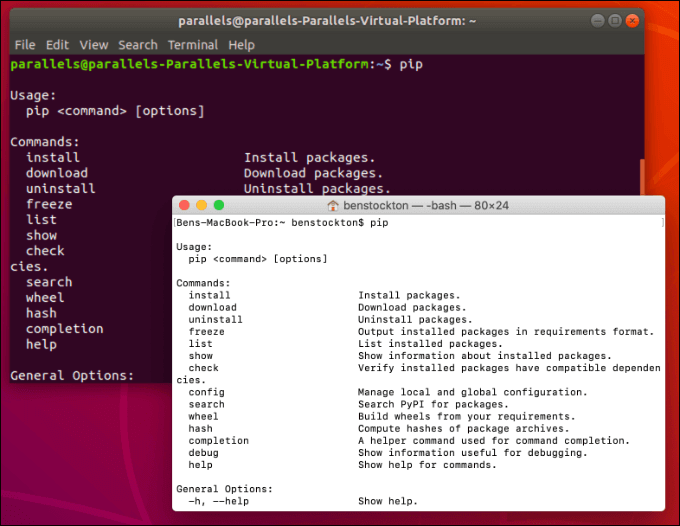
- #COLORSYS PYTHON 3 INSTALL PIP INSTALL#
- #COLORSYS PYTHON 3 INSTALL PIP UPDATE#
- #COLORSYS PYTHON 3 INSTALL PIP MANUAL#
- #COLORSYS PYTHON 3 INSTALL PIP DOWNLOAD#
#COLORSYS PYTHON 3 INSTALL PIP INSTALL#
Try installing a package: pip install httpie Now you should be able to run pip from the command line. C:\Python27\Scripts) to your path (Start / Edit environment variables). Find pip.exe on your computer, then add its folder (eg. Follow (v=ws.10).aspxįor me, this installed Pip at C:\Python27\Scripts\pip.exe. You possibly need an administrator command prompt to do this. Essentially Official instructionsĭownload get-pip.py, being careful to save it as a. Python ≤ 2.7.8 and Python ≤ 3.3įollow my detailed instructions at. I discuss this at Does Python have a package/module management system?Īlas for everyone using an earlier Python. Of course, that doesn't mean Python packaging is problem solved. In shipping with a package manager, Python joins Ruby, Nodejs, Haskell, Perl, Go-almost every other contemporary language with a majority open-source community. Newbies are no longer excluded by the prohibitive difficulty of setup. It makes the community's wealth of libraries accessible to everyone. This is the best feature of any Python release. Good news! Python 3.4 (released March 2014) ships with Pip. If setuptools is not already installed, get-pip.py will install setuptools for you. Then run the following (which may require administrator access): python get-pip.py
#COLORSYS PYTHON 3 INSTALL PIP DOWNLOAD#
To install pip, securely download get-pip.py
#COLORSYS PYTHON 3 INSTALL PIP MANUAL#
If you want to do it the manual way, the now-recommended method is to install using the get-pip.py script from pip's installation instructions. Install using the manual way detailed below. If your Unix/Linux distro doesn't have it in package repos # First command requires you to have enabled EPEL for CentOS7 Installing pip on CentOS 7 for Python 3.xĪssuming you installed Python 3.4 from EPEL, you can install Python 3's setup tools and use it to install pip. On CentOS 7, you have to install setup tools first, and then use that to install pip, as there is no direct package for it. Installing pip on CentOS 7 for Python 2.x
#COLORSYS PYTHON 3 INSTALL PIP UPDATE#
On a fresh Debian/Ubuntu install, the package may not be found until you do: sudo apt-get update Run the following command from a terminal: sudo apt-get install python3-pip Installing on Debian (Wheezy and newer) and Ubuntu (Trusty Tahr and newer) for Python 3.x Run the following command from a terminal: sudo apt-get install python-pip Installing on Debian (Wheezy and newer) and Ubuntu (Trusty Tahr and newer) for Python 2.x Instructions for some of the more common distros follow. You can usually install the package for pip through your package manager if your version of Python is older than 2.7.9 or 3.4, or if your system did not include it for whatever reason. If you're running Python 2.7.9+ or Python 3.4+Ĭongrats, you should already have pip installed.


This is because there are sometimes many names that all describe the same color. You will notice a similar phenomenon occurs for color names when you set a color using hex code, RGB, or HSV. Notably, the colornames.txt file has numerous entries that all share the name "blue." This is true of many colors.īecause color is thought to be a culturally relative phenomenon, I have chosen to return all hex codes that match a given name. See the colornames.txt document contained herein, with enormous thanks to You can set a color using a very large library of color names. Example 1.1: Create a ColorController object using a familiar, english-language color name, and print out its properties.

My name is Tal Zaken, and I wrote this library for use in a natural language processing project Welcome to the ColorController Python library!


 0 kommentar(er)
0 kommentar(er)
